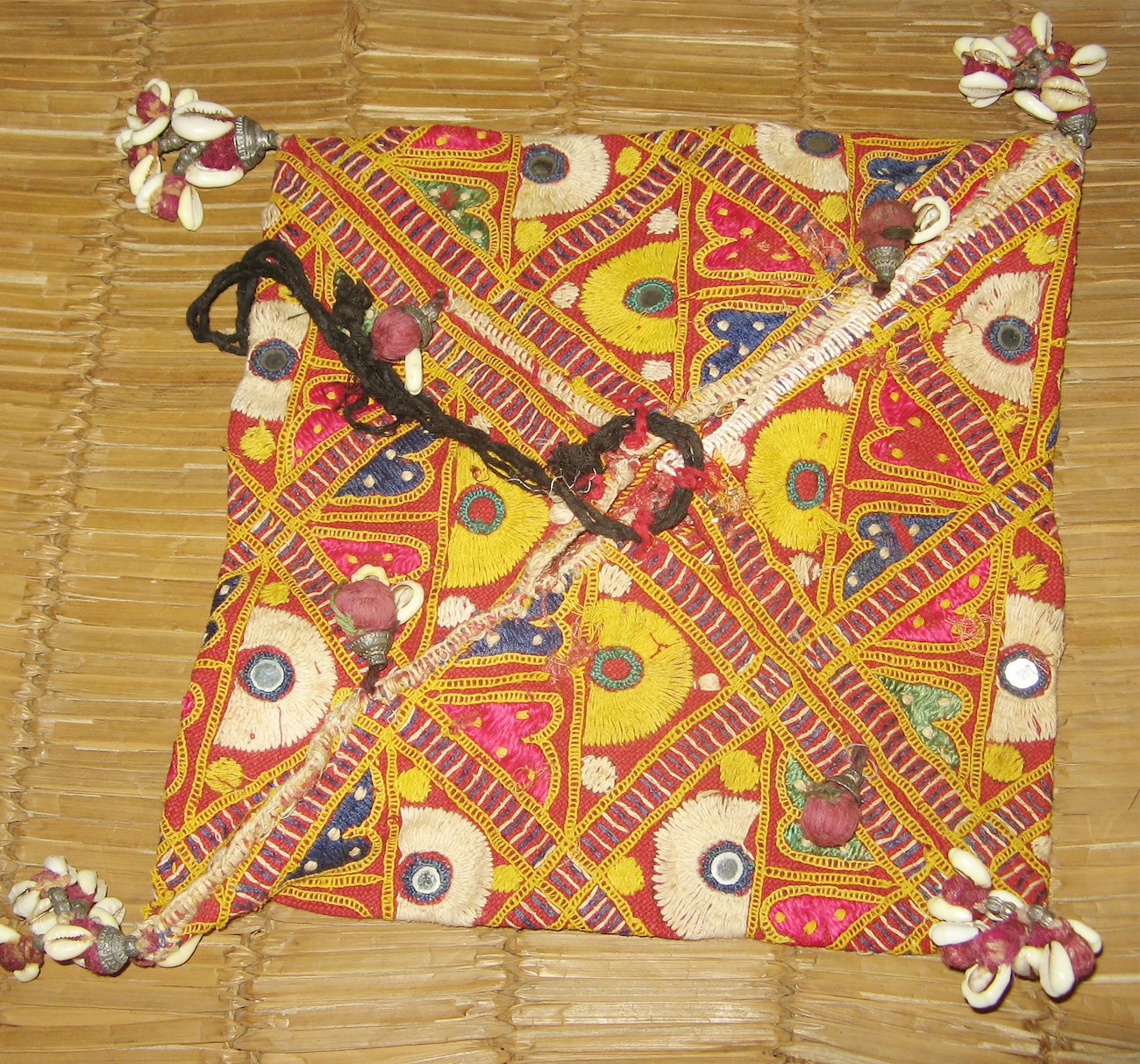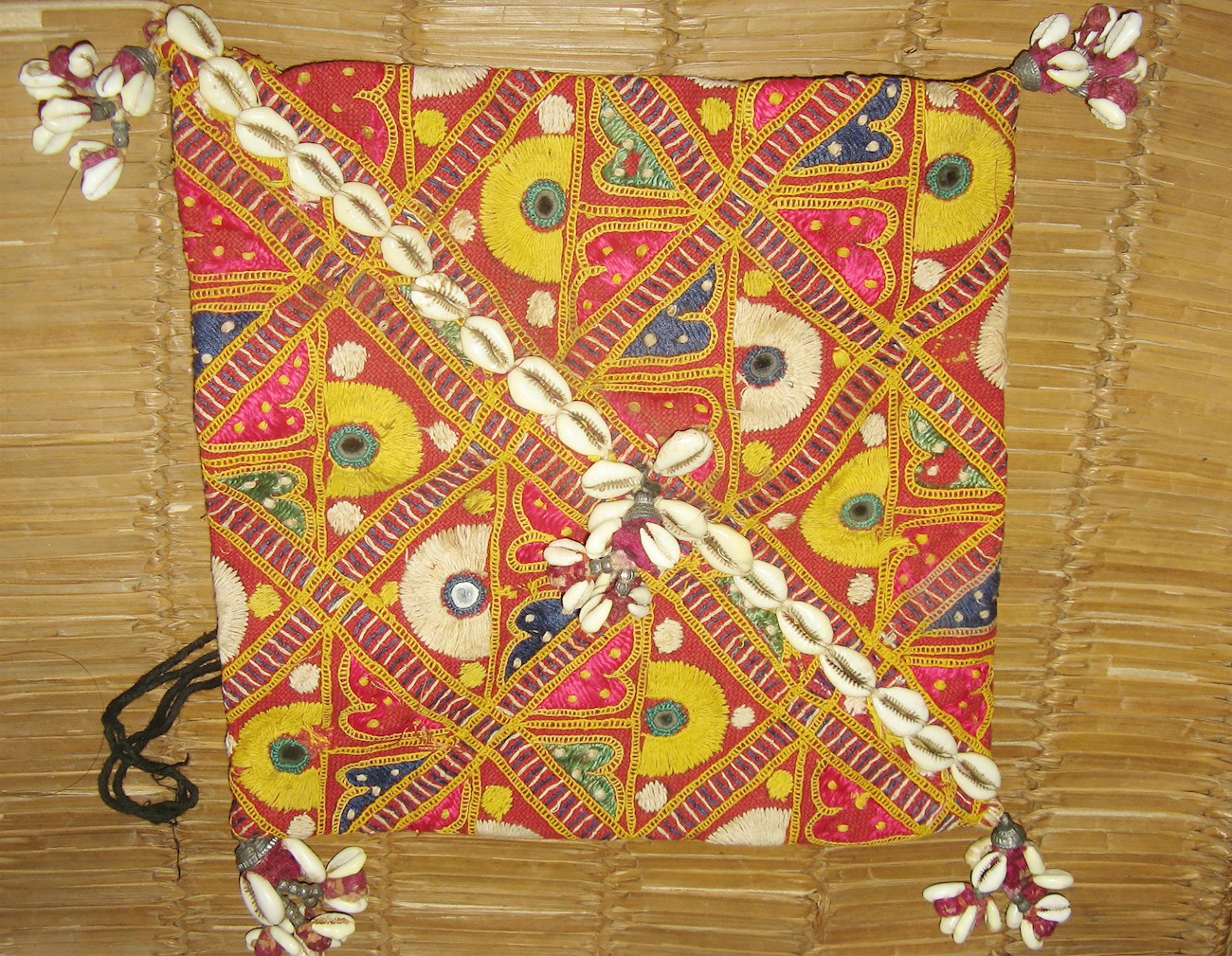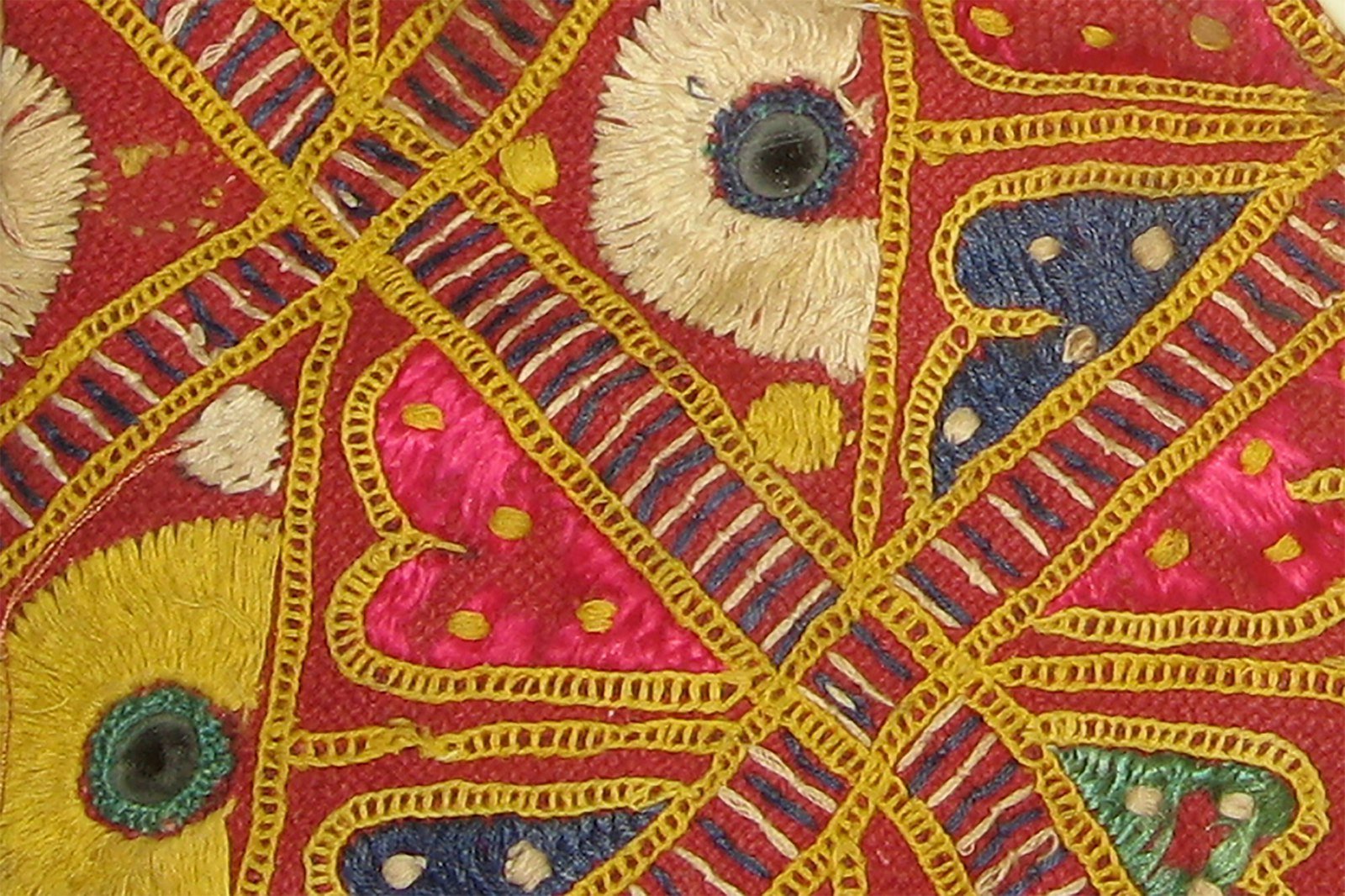When textile collector Chitra Balasubramaniam bought a brightly embroidered bag, she hoped she’d found an authentic treasure. As she talked with other textile experts, they left her questioning its origin and its purpose. Did the Sodha Rajput tribe make and use this bag or did someone else create it specifically for the tourist trade?
This masala bag by the Sodha Rajput tribe from Sindh, Pakistan, and Gujarat, India, has a bit of a crazy explanation for how it ended up in my collection. The bag was purchased from my regular vintage-textile dealer. Usually, she and I have an interesting conversation, and then, the right royal bargaining starts, and depending on her earnings and my persuasive skills, a deal is struck.
I bought this particular bag with a couple of other pieces, and did let go of another masala bag (I still cringe when I think of it). I bought this bag because it was large, has good needlework, and was a value for the money. However, when I showed it to two other experts, they pronounced that it was made for the tourist market and that I had been conned.

This side of the masala bag has the opening, which uses a cord to hang it. The cowrie shells at the corner have a little metal cap attached. The sitiching with white thread made the piece suspect for it seems to have been done as an afterthought. But it’s possible that a thrifty woman repurposed another textile and turned it into a more utility-driven one.
Authentic?
The bag is made from a square piece of textile that has been repurposed into a masala bag. The two experts further emphasised that Sodha Rajputs never ever used masala bags or other such bags. It was only the Lambani who used them; no other community did.
Also, the fact that the embroidery includes cowrie shells with pompoms attached to a metal cylinder added to the tourist-bag theory. The bag in itself is beautiful with gorgeous embroidery. The embroidery is a mix of chain stitch, back stitch (bakhiyo), and satin stitch. It uses one of the traditional ways of affixing mirrors to a textile. It is a square-shaped piece with a central opening with a cord to hold it up.
The lady from whom I have purchased other pieces is an honest seller, earning her everyday income from the market. She has never conned me with such pieces and would honestly tell me if a textile were questionable. So, I let the matter rest.

The other side of the masala bag. It is a square envelope-shaped bag and measures 10 x 10 inches (25.4 x 25.4 cm). The cowrie shells down the middle length of the bag are visible on this side.
More Research
However, recently while writing an article about the Dhebaria Rabari community (“Banned Embroidery: The Story of a Dhebaria Rabari Bhujka,” PieceWork Spring 2021), I chanced upon the fact that the community made quite a number of bags for use in the kitchen. Since they were nomads, bags were made to hold tea leaves, keep bread warm, and so forth. So it does seem probable that my bag might have been a masala bag or a handy bag made for kitchen use by the community.
Most of these bags are made by women who cared for their homes with much affection. Their individual creativity and ideas are represented in these textiles. I have come across examples of cowrie shells and pakko embroidery used by the Sodha Rajput. (For more examples of pakko embroidery, see Chitra’s web post, “Game of Kings: The Embroidered Caupar Game Board.”)
The bag still leaves an unanswered question. Was the piece originally a masala bag, a general bag, or one for the tourist market? This is a difficult one to answer. But I do love the beautiful colors and detailed needlework, so I will keep it.
You can learn more about the embroidery traditions of the Dhebaria Rabari nomads in our upcoming Winter 2025 issue. Subscribe today to get this issue delivered to your inbox the day it goes live on October 9, 2025.
Originally published May 5, 2021; updated August 25, 2025.

